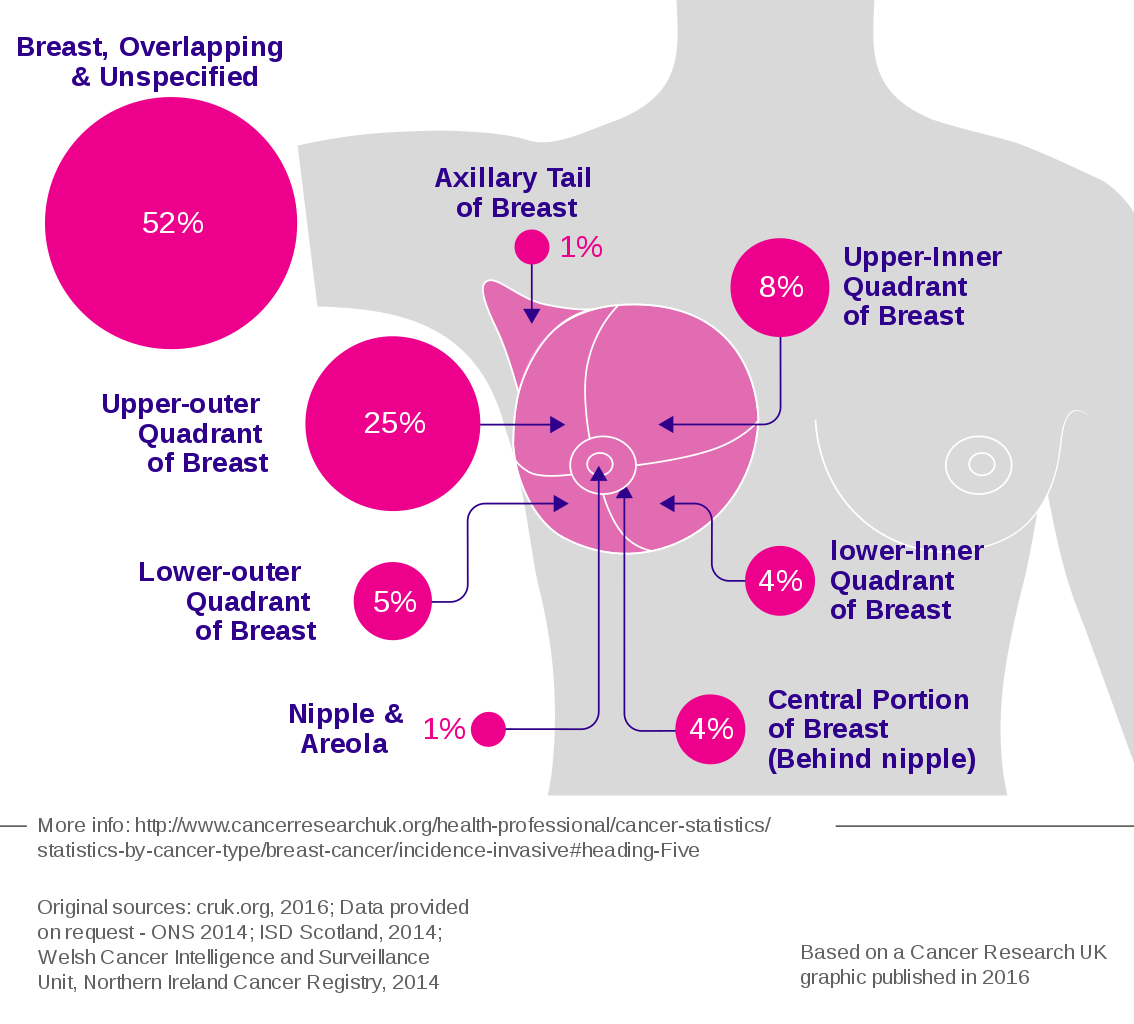The nurse is performing a breast examination on a client. The nurse understands that examining the upper outer quadrant of the breast is especially important because this part is:
The location of most breast tumors.
More prone to Injury and calcifications than other locations in the breast
The largest quadrant of the breast
Where most of the suspensory ligaments attach
The Correct Answer is A
A. The location of most breast tumors: This choice is correct. The upper outer quadrant of the breast is the most common site for breast tumors. This area has a higher concentration of glandular tissue, making it more susceptible to the development of tumors. Therefore, thorough examination of this area is crucial during breast examinations.
B. More prone to Injury and calcifications than other locations in the breast: While injuries can occur in any part of the breast, the statement about calcifications is not accurate. Calcifications in breast tissue can occur in various areas and are not specific to the upper outer quadrant.
C. The largest quadrant of the breast: This statement is not accurate. The breast quadrants are not distinguished by size; they are anatomical divisions used for reference during breast examinations. Each quadrant has its significance for examination purposes, but none is considered the largest.
D. Where most of the suspensory ligaments attach: The suspensory ligaments, also known as Cooper's ligaments, provide structural support to the breast tissue. While they are essential for breast anatomy, they are not concentrated in the upper outer quadrant exclusively. These ligaments are distributed throughout the breast tissue.

Nursing Test Bank
Naxlex Comprehensive Predictor Exams
Related Questions
Correct Answer is C
Explanation
A. Friction rub:
A friction rub is a grating or rubbing sound or sensation heard or felt during auscultation or palpation. It occurs when inflamed pleural or pericardial surfaces rub against each other during breathing or heartbeats, respectively.
B. Tactile fremitus:
Tactile fremitus refers to the palpable vibrations transmitted through the bronchopulmonary tree to the chest wall as the patient speaks. It is assessed by placing hands on the patient's back while the patient speaks certain words. Increased tactile fremitus can occur in conditions with lung consolidation, such as pneumonia.
C. Crepitus:
Crepitus is a crackling or grating sensation felt under the skin or heard when the ends of a broken bone rub against each other. It can also occur when air leaks into subcutaneous tissue, leading to a crackling sensation upon palpation.
D. Adventitious sounds:
Adventitious sounds refer to abnormal lung sounds heard during auscultation. These sounds include crackles (rales), wheezes, rhonchi, and pleural friction rubs. Adventitious sounds can indicate various respiratory conditions, such as pneumonia, bronchitis, or asthma.
Correct Answer is C
Explanation
A. Checks the instrument gauge to ensure the reading starts at zero:
This action is correct. Before taking a blood pressure reading, it's essential to ensure that the instrument's gauge starts at zero. This ensures accurate measurement as the reading reflects the pressure above zero.
B. Centers the cuff bladder over the client's brachial artery:
This action is correct. Proper placement of the blood pressure cuff over the brachial artery is crucial for accurate readings. Centering the cuff ensures that the artery is correctly compressed for measurement.
C. Places the client's arm above the level of the client's heart:
This action is incorrect. Placing the arm above heart level can result in a falsely low blood pressure reading. The arm should be at the same level as the heart to obtain an accurate measurement.
D. Wraps the blood pressure cuff around the client's arm using firm pressure:
This action is correct, but it's important to note that while the cuff should be snug, it should not be too tight or too loose. Wrapping the cuff with firm, even pressure ensures proper compression of the artery for an accurate measurement.
Whether you are a student looking to ace your exams or a practicing nurse seeking to enhance your expertise , our nursing education contents will empower you with the confidence and competence to make a difference in the lives of patients and become a respected leader in the healthcare field.
Visit Naxlex, invest in your future and unlock endless possibilities with our unparalleled nursing education contents today
Report Wrong Answer on the Current Question
Do you disagree with the answer? If yes, what is your expected answer? Explain.
Kindly be descriptive with the issue you are facing.
